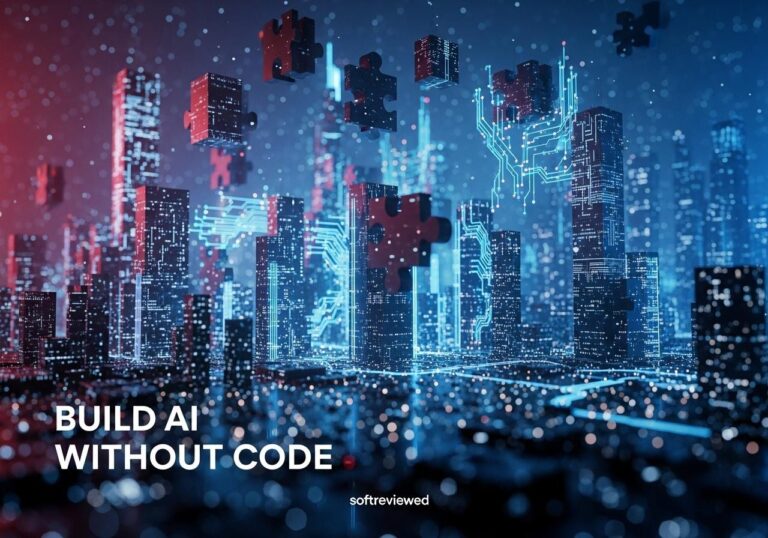Decoding Inference Time Compute
Understanding the engine that powers AI predictions and its impact on security and efficiency
Enhanced Security Through Compute
Increased inference-time compute reduces vulnerability to adversarial attacks by providing extended processing time for accurate analysis.
Adversarial Attack Challenges
Subtle perturbations in input data can cause AI models to misclassify results, highlighting the need for robust defense mechanisms.
Optimized Performance
Advanced hardware, software, and middleware solutions improve AI inference speed and efficiency through strategic optimizations.
Security-Efficiency Balance
Finding the optimal balance between computational efficiency and protection against adversarial attacks remains a key challenge.
Enhanced Data Visualization
Generative AI transforms simple inputs into detailed, creative outputs, revolutionizing data visualization capabilities.
Artificial intelligence is rapidly transforming our world, and while much attention is given to training AI models, the actual magic often happens during inference. This process, where a trained model makes predictions or decisions based on new data, relies heavily on inference time compute. Understanding what this means, and how to optimize it, is critical for building fast, efficient, and scalable AI applications. This article will explore the ins and outs of inference time compute, why it's essential, and how it's shaping the future of AI.
What Exactly is Inference Time Compute?
In simple terms, inference time compute refers to the amount of processing power, memory, and other computational resources a machine learning model needs to produce an output from a given input. Think of it as the "brainpower" required for an AI to use its learned knowledge to make a prediction, generate text, or classify an image. Unlike the intensive process of model training, which requires substantial computational resources over extended periods, inference is often expected to be quick and deliver low-latency results, particularly for real-time applications.
The Difference Between Training and Inference
It's crucial to understand the difference between training and inference. Training is the process where an AI model learns from a large dataset, adjusting its internal parameters to improve its ability to recognize patterns and make accurate predictions. This phase is computationally demanding and can take hours, days, or even weeks to complete. Inference, on the other hand, is when the trained model is put to use, applying what it has learned to new, unseen data. This phase is usually faster, but its speed and efficiency still rely on the available compute resources, known as inference-time compute.
Why Does Inference Time Compute Matter So Much?
The speed and efficiency of inference are vital for several reasons, influencing both user experience and operational costs.
Latency and User Experience
Many AI applications, such as voice assistants, recommendation systems, and real-time language translation, require predictions with minimal delay. High inference compute demands can lead to slow response times (latency), which can frustrate users and negatively impact the overall experience. Imagine asking your smart speaker a question and waiting several seconds for the answer – not ideal! Optimized inference ensures a smooth and responsive interaction.
Cost Efficiency and Scalability
Running AI models in production can be expensive, especially when deployed at scale. The computational resources required for inference directly translate into operational costs. Lowering inference-time compute demands reduces these costs, particularly in cloud-based environments where pricing is often based on resource consumption. Furthermore, for large-scale applications serving millions of users, optimizing inference is crucial for ensuring the system can handle high traffic without performance bottlenecks. Efficient inference enables greater scalability.
Energy Consumption and Sustainability
Efficient inference also contributes to more sustainable AI development. Reducing the energy needed to process predictions is increasingly important, as AI's environmental impact becomes a growing concern. By optimizing inference time compute, we not only improve performance and reduce costs but also contribute to a more environmentally responsible approach to AI.
Key Factors Influencing Inference Time

Several factors can affect how much compute an AI model needs during inference. Understanding these factors helps in identifying areas for optimization.
Model Complexity and Size
The complexity of the AI model itself is a major determinant of inference time. Larger models with more parameters, such as those used in complex tasks like large language models (LLMs) or sophisticated image recognition systems, require more computational power. Model pruning (removing less important connections) or simplification can help reduce these demands. For example, a lightweight model like MobileNet might be used for mobile applications requiring fast inferences, while a large language model like GPT-4 will require substantial compute during inference.
Hardware and Infrastructure
The hardware specifications of the system running the AI model significantly impact inference time. Faster processors, more memory, and high-bandwidth storage all contribute to faster inference. Specialized hardware like Graphics Processing Units (GPUs) and Tensor Processing Units (TPUs) can provide a substantial boost in performance by accelerating the parallel computations required during inference. Choosing the correct hardware is crucial for optimizing inference time.
Optimization Techniques
Various optimization techniques can reduce inference time. These include:
- Quantization: Reducing the precision of the model's numerical values, which uses less memory and computation.
- Knowledge Distillation: Training a smaller "student" model to mimic the behavior of a larger, more complex "teacher" model.
- Model Pruning: Removing redundant connections or parameters in the neural network.
- Batch Processing: Processing multiple inputs at the same time which helps to make efficient use of the hardware.
These methods reduce model size and complexity leading to faster inference times.
The Rise of Inference-Time Scaling
A new paradigm is emerging in AI: inference-time scaling. This involves allocating more computational resources during the inference phase, rather than just relying on a larger model or more training data. This approach signifies a shift towards focusing on how a model reasons and generates outputs, not just on the model's knowledge gained during training.
Beyond Model Size: The Power of 'Thinking Time'
Recent research suggests that in some cases, increasing inference-time compute can have a similar (or even greater) impact on final performance as increasing training compute. For example, techniques like chain-of-thought prompting, where a model reasons through a problem step-by-step, require more compute during inference. This demonstrates that giving a model more "thinking time" during inference can lead to higher accuracy and better results. OpenAI’s GPT-o1 project, for example, showed the power of leveraging more compute at inference time to enhance AI reasoning capabilities.
How Do DeepSeek AI Models Affect Inference Time Compute in AI Predictions?
Microsoft deepseek ai models significantly enhance inference time compute in AI predictions. By leveraging advanced algorithms and optimized architectures, these models streamline data processing, reducing latency and improving responsiveness. This efficiency allows businesses to deploy real-time decision-making tools, transforming how they interact with data and deliver insights.
Inference Time Compute vs Training Compute: A Balancing Act
While both are important, there are distinct trade-offs between training and inference compute. Training often requires a large initial investment in compute resources, but this is a one-time cost. Inference, however, incurs ongoing costs as long as the model is in use. The volume of inference requests, especially for widely used models, can result in a substantial accumulation of costs over time.
The Trade-offs and Strategic Decisions
Organizations need to make strategic decisions about how to prioritize compute resources. If real-time inference is critical, they might choose to optimize inference-time compute, even at the expense of increased training costs. On the other hand, if the model will be used infrequently, then prioritizing training efficiency might be more sensible. Here’s a simple table to highlight the trade-offs:
| Feature | Training Compute | Inference Compute |
|---|---|---|
| Timing | One-time or periodic, often large bursts | Continuous, ongoing |
| Resource Need | High compute for initial model development | Variable, often less intense than training |
| Cost | High upfront cost | Accumulates over time |
| Focus | Learning and model parameter adjustment | Applying model knowledge to new data |
| Optimization | Data, algorithm, model architecture | Model size, hardware, post-training |
The optimal approach will depend on the specific application and its requirements.
Stepping into Tomorrow: The Impact of Optimized Inference
As AI continues to develop, the focus on optimizing inference will only become more critical. Expect to see more advancements in hardware, optimization techniques, and adaptive inference methods that can dynamically adjust compute resources based on the complexity of the task. For instance, researchers are exploring methods where LLMs can predict if they can do better by expending more compute during the process of generating a response, and use that prediction to adjust compute resources accordingly. This will not only make AI systems faster and more efficient but will also enable new and innovative AI applications. The move toward more efficient use of inference compute suggests we might soon see a greater impact from smaller, carefully optimized AI models.
Wrapping Up: The Ongoing Evolution of Inference Compute
Inference time compute is an essential part of the AI lifecycle. It dictates the speed, responsiveness, cost efficiency, and sustainability of AI applications. As AI continues to evolve, the focus on optimizing inference will only become more important. By understanding what inference time compute is, the factors that influence it, and the emerging techniques for optimizing it, we can all ensure AI systems are not just more powerful but also more practical, cost-effective, and environmentally responsible. This continuous improvement will help shape a future where AI is more accessible and better integrated into all aspects of our lives.
For further exploration, you can check out the official PyTorch documentation on deploying models for inference, which includes best practices and optimization strategies: PyTorch Model Deployment.
AI Inference Computing Metrics (2023)
Comprehensive visualization of key AI inference metrics including computing costs, energy consumption, and optimization impacts across different deployment scenarios.







